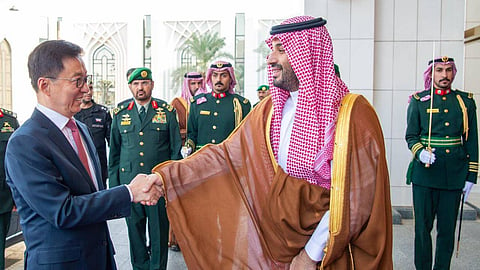China and Saudi Arabia are walking the tightrope over Southasia’s schisms
RELATIONS BETWEEN the countries of Southasia are being quietly redrawn. The South Asian Association for Regional Cooperation (SAARC) is dead, a China-backed bloc is taking shape, and India – estranged from Washington DC amid US president Donald Trump’s trade war with New Delhi and unable to meet his demands vis-à-vis ending its purchases of Russian oil – is unexpectedly drifting closer to Beijing. Meanwhile, Israel’s strike on Qatar in early September this year has ricocheted into the Subcontinent, pushing Saudi Arabia into a mutual defence pact with Pakistan that might also tilt the regional balance against India. The two external actors driving much of this transformation – China and Saudi Arabia – are themselves navigating perilous fault lines that could just as easily unravel their ambitions as consolidate them in the future.
Can Beijing really deliver on its ambitions to create a new Southasian bloc? The question is important because of recent political shifts in Bangladesh and Nepal, which have both seen dramatic changes of ruling regime, and the uncertainty surrounding the political futures in other countries in the region. Beijing has been trying to resolve multiple Southasian entanglements that have a bearing on its interests, but has not been able to.
For instance, since the Taliban’s return to power in Afghanistan in 2021, relations between Kabul and Islamabad have soured, with cross-border terrorism emerging as the most explosive fault line. Shahbaz Sharif, Pakistan’s prime minister, recently delivered an uncharacteristically blunt ultimatum to the Taliban regime: side with Pakistan or with the outlawed Tehreek-i-Taliban Pakistan (TTP). Kabul, for its part, has continued to deny sheltering or supporting the TTP, even as attacks by the group inside Pakistan continue to intensify. For China, which has been trying to fold both Pakistan and Afghanistan into its Belt and Road corridors, this feud threatens to derail the very foundation of its regional strategy. This seems to be currently focused on altering Southasia’s geopolitical landscape with a new regional bloc – a replacement for the largely defunct SAARC – that apparently includes both Pakistan and Afghanistan.

